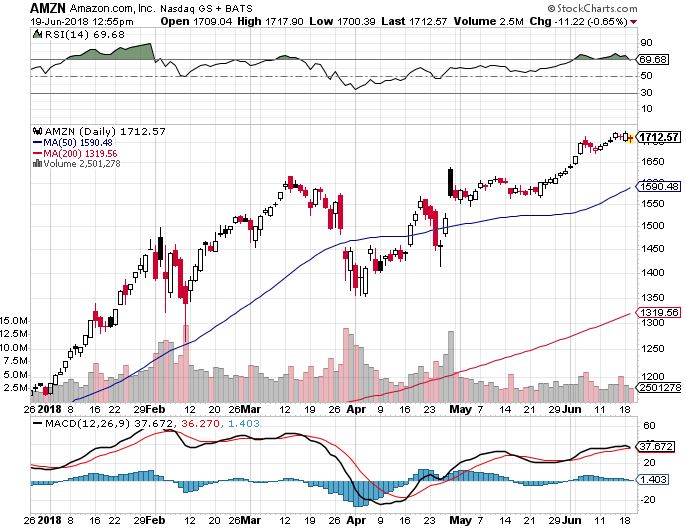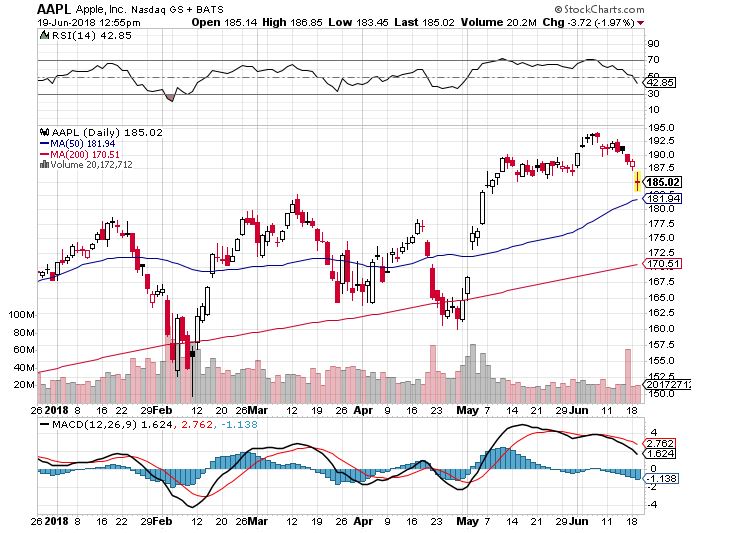The Tale Of Two Economies
If you are in the right economy, that of the future, you are having another spectacular year. If you aren’t you are probably posting losses for 2018. Call it the “The tale of two economies.” I suspected that this was set up over the past couple of weeks. No matter how much bad news and uncertainty dumped on these companies the shares absolutely refused to go down. Instead, they flatlined just below their 2018 highs.
An old trading nostrum dictates that if you dump a stock and it fails to go down you buy it with both hands. Technology stock performance of the past week is a classic example of how well this works. When the Facebook (FB) hacking scandal hit in March, investors were ringing their hands about the potential demise of Mark Zuckerberg’s vaunted business model and the shares plunged to $150. However, while analysts were making these dire predictions, I knew that Facebook itself was signing a long-term lease for a brand new 46-story skyscraper in downtown San Francisco just to house its Instagram operations. Three months later, and the company that misused Facebook’s data, Steve Bannon’s Cambridge Analytica, is bankrupt, and (FB) is trading at $195, a new high. Facebook was right, and the Cassandra’s were wrong.
Amazon was given up for dead during the February meltdown as the shares withered from a daily onslaught of presidential attacks threatening antitrust action. Today, the shares are up a mind-blowing 63% from those lows. And while Apple conducts its developers conference in San Francisco today, its shares continue their relentless march toward the first-ever $1 trillion market cap ($943 billion at today’s close). My $200 2018 forecast is suddenly looking pretty good.
It turns out that technology companies are immune from most of the negative developments that have caused the rest of the stock market to drag. I’ll go through these one at a time.
Rising Interest Rates
Tech companies are sitting on gigantic cash mountains, some $270 billion in Apple’s case, which means that as net lenders to the credit markets they are beneficiaries of rising rates. This makes tech companies immune from the credit problems that will demolish old economy industries during the next rate spike.
Rising Oil Prices
While tech companies are prodigious consumers of electricity, many power these with massive solar arrays and they sell periodic excess power to local utilities. So as net energy producers they profit from rising energy prices.
Rising Inflation
Since the output of technology companies is entirely digital they can handily increase productivity faster than the inflation rate, whatever it is. Traditional old economy companies, such as industrials and retailers can’t do this. Remember that while analogue production grows linearly, digital production grows exponentially, enabling tech companies to handily beat the inflation demon, leaving others behind in the dust.
Share Buybacks
While technology companies account for only 26% of the S&P 500 stock market capitalization, they generate 50% of the profits. Thanks to the massive tax breaks and low-taxed repatriation of foreign profits enabled by the new tax bill, share buybacks are expected to rocket from $500 billion to $800 billion this year. Companies repurchasing their own shares have become the sole net buyers of equities in 2018.
And companies with the biggest profits buy back the most stock. This has created a virtuous cycle whereby higher share prices generate more buybacks to create yet higher share prices. Old economy companies with lesser profits are buying back little, if any, of their own shares.
Of course, tech companies are not without their own challenges. For a start, they have each other to worry about. FANGs will simultaneously cooperate with each other in a dozen areas, while fighting tooth and nail and sue on a dozen others. It’s like watching Silicon Valley’s own version of HBO’s Game of Thrones. Also, occasionally the tech story becomes so obvious to the unwashed masses that it creates severe overbought conditions and temporary peaks, as we saw in January.



The Diary of a Mad Hedge Fund Trader, published since 2008, has become the top performing trade mentoring and research service in the industry, averaging a 34.84% annual return for ...
more


